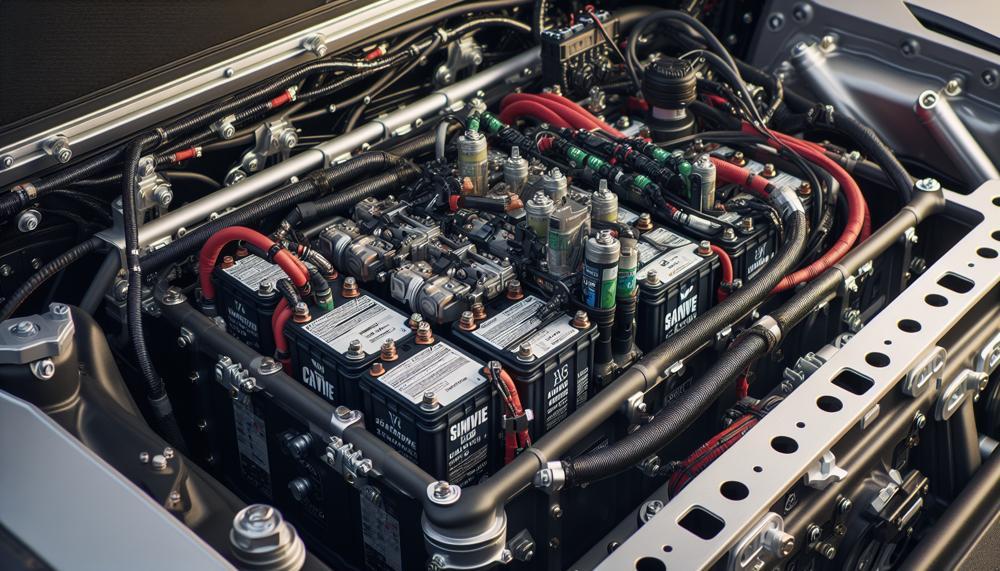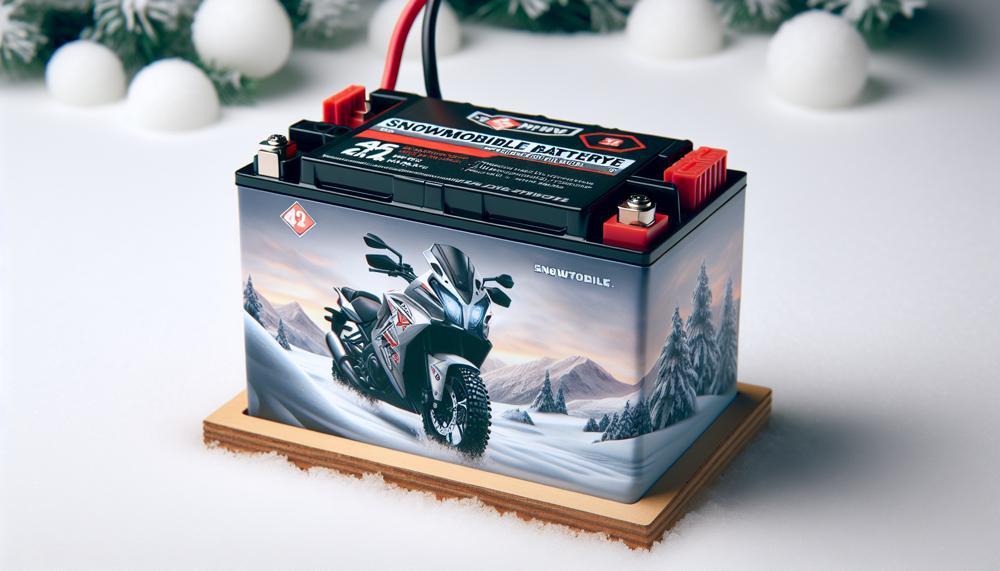Are you a snowmobiling enthusiast always seeking new ways to enhance your ride? Have you ever pondered the possibility of a snowmobile running without a battery? Well, today we’re going to delve into this fascinating topic and uncover all the details about snowmobiles operating without a battery.
So, let’s rev up our engines and embark on this journey together.
In this blog post, we’ll explore:
- The mechanics behind how a snowmobile can function without a battery
- The perks of owning a snowmobile that doesn’t rely on battery power
- Tips and tricks for maintaining and troubleshooting a battery-free snowmobile
- Real-life experiences from fellow riders who have successfully operated their machines sans battery
- Crucial safety precautions to keep in mind when riding without a battery
So buckle up and get ready for an exhilarating ride as we venture into the world of snowmobiling without batteries.
Let’s hit the snowy trails together.
Will A Snowmobile Start Without A Battery?
Contents
- 1 Will A Snowmobile Start Without A Battery?
- 2 Does a snowmobile need a battery to start?
- 3 Can you pull start a snowmobile without a battery?
- 4 How to start a snowmobile with a down battery?
- 5 Can you run a snowmobile without a battery?
- 6 Effect of running your snowmobile without a battery?
- 7 How can a snowmobile run without a battery?
- 8 How long can you run your snowmobile without a battery?
- 9 How to make your snowmobile battery last longer?
- 10 Conclusion
The answer is yes, but it may not function at its full potential. The battery in a snowmobile serves two main purposes: powering the electrical components and providing the initial spark for starting the engine. However, these functions can still be achieved through alternative means.
| Function | Alternative Means |
| Powering electrical components (lights, starter motor) | Using a pull-start mechanism or rechargeable electric start systems |
| Starting the engine | Using a pull-start mechanism or an external power source like a jump-start kit or another vehicle’s battery |
Although it is possible to start a snowmobile without a battery, it may require more physical effort and be less reliable in extremely cold temperatures. For instance, using pull-start mechanisms can be challenging for some individuals, especially in freezing temperatures.
Additionally, without a battery to power the electrical components, the lights may not work, and the starter motor may not operate as efficiently.
Does a snowmobile need a battery to start?
The necessity of a battery for starting a snowmobile depends on its type and model. While some traditional snowmobiles with carbureted engines can be manually started without a battery, modern snowmobiles with electronic features typically require one for optimal functioning.
This is due to the fact that the absence of a battery can negatively impact the overall performance and function of the snowmobile, as it acts as a voltage stabilizer and powers essential electronic components.
| Snowmobile Type | Starting Method | Battery Requirement |
| Traditional (with carbureted engines) | Manual pull-start mechanism | Not required, but may affect performance |
| Modern (with electronic features such as fuel injection and digital displays) | Battery-powered start button | Required for optimal functioning and performance |
For snowmobiles that do require a battery, proper maintenance and periodic charging are crucial to extend its lifespan and ensure efficient operation.
Neglecting to do so can result in a dead battery, potentially leaving you stranded during your ride.
When purchasing or replacing a battery for your snowmobile, it is important to consult the manual and check the specifications to ensure compatibility and optimal performance.
Using the wrong battery can also lead to safety hazards and damage to the snowmobile’s electrical system.
Can you pull start a snowmobile without a battery?
There are ways to start a snowmobile without a battery, such as using the pull-start method. This technique involves pulling a rope connected to the engine, which creates a spark and starts the engine.
It is similar to how simpler motorcycles or lawnmowers are started. However, this method may not be suitable for all snowmobiles and comes with its own set of limitations.
| Advantages | Disadvantages | Challenges |
| Reduces weight of the snowmobile | No electric start option | Requires physical strength |
| Low maintenance compared to battery-powered snowmobiles | Dependent on proper maintenance and charging for battery-free operation | Must be able to withstand extreme cold conditions |
| Possibility of less concern about battery performance in freezing temperatures | ||
| Potential use of alternative energy sources like supercapacitors |
While the pull-start method may seem like a convenient option, it is important to consider the challenges and limitations it presents. The lack of an electric start means that multiple attempts may be needed if the snowmobile does not start on the first pull. This can be physically exhausting and time-consuming, especially in extreme weather conditions.
Additionally, relying on proper maintenance and charging for battery-free operation can be challenging, as not all snowmobilers may be aware of the technicalities involved. Without proper maintenance, the pull-start mechanism may not work efficiently or at all.
The adaptability of a snowmobile’s design and technology to extreme cold conditions is also crucial for successful battery-free operation. Extreme cold can affect the performance of the pull-start mechanism and the engine itself, making it difficult to start without a battery.
However, there is potential for alternative energy sources to be used in snowmobiles, such as supercapacitors. These devices have high power density and can charge quickly, making them suitable for use in cold temperatures.
While not yet widely used, this technology could potentially eliminate the need for a battery in snowmobiles in the future.
How to start a snowmobile with a down battery?
Starting a snowmobile with a depleted battery can be a daunting task, but fear not. Here is an easy-to-follow guide to help you get your snowmobile up and running again in no time:
| Step | Action | Notes |
| 1 | Prepare for jumpstarting | – Jumpstarting is not recommended, but may be necessary in an emergency. – You will need jumper cables and a functional 12-volt battery. |
| 2 | Connect the positive clamps | – Connect the red (positive) clamps to the positive terminals on both batteries. – Make sure to properly identify the positive and negative terminals before connecting. |
| 3 | Ground the black clamp | – Attach the black (negative) clamp to the negative terminal on the working battery while grounding the other end. – Never allow the clamps to touch each other or any metal objects. |
| 4 | Start your engine | – Once all connections are made, start your snowmobile’s engine. |
| 5 | Let it run for a few minutes | – Allow the engine to run for a few minutes before disconnecting the cables in reverse order of connection. |
| 6 | Disconnect the cables | – Disconnect the cables in reverse order of connection. – If done correctly, jumpstarting should only take a few minutes. |
| 7 | Replace the battery if possible | – While it is possible to run a snowmobile without a battery, it is best to replace it as soon as possible to avoid potential electrical issues. |
Remember, jumpstarting your snowmobile should only be done in emergencies. It is always best to replace the battery as soon as possible. Alternative options for starting a snowmobile with a dead battery include using a jump box or pull-starting.
However, proper maintenance and timely replacement of the battery are key to avoiding any potential issues while riding.
Can you run a snowmobile without a battery?
The answer is yes, but it may not be the most practical or dependable choice.
The Importance of a Snowmobile Battery:
The battery in a snowmobile is the main source of power for its engine. It supplies the necessary electrical current to start the engine and power the lights, gauges, and other accessories.
Additionally, it helps regulate the overall performance of the snowmobile.
Running a Snowmobile Without a Battery:
While it is technically possible to run a snowmobile without a battery, it requires a pull-start mechanism. This involves physically pulling a cord attached to the engine to start it.
This method can be physically strenuous and may not be effective in extremely cold temperatures.
Pull-starting also has limitations when it comes to reliability. If your snowmobile has been idle for an extended period, the engine may be difficult to start, even with a pull-start mechanism.
Furthermore, if your snowmobile has an electric start function and you remove the battery, it could damage the wiring and prevent it from starting at all.
Future Possibilities:
As technology continues to advance, manufacturers are exploring more sustainable options for powering snowmobiles.
One such option is electric snowmobiles, which eliminate the need for batteries as they run on rechargeable batteries that can be plugged into an outlet.
Effect of running your snowmobile without a battery?
Running your snowmobile without a battery can have a wide range of consequences, from minor inconveniences to significant safety concerns. These effects include:
- Limited features and functionalities: Without a battery, your snowmobile will not be able to power its electrical components, such as lights, hand warmers, and electric start mechanisms.
- Difficulty starting the engine: Instead of relying on a battery-powered electric start, you may have to use a pull-start mechanism that requires more physical effort. This can be challenging for riders with physical limitations or in cold weather conditions.
- Dependence on weather conditions: Operating a snowmobile without a battery means depending solely on the magneto system. However, this system may not function correctly in extremely cold or wet conditions.
- Risk of engine damage: The battery helps regulate your snowmobile’s engine performance, and running it without one can place excessive strain on the engine and potentially cause damage.
- Environmental impact: While it is possible to run a snowmobile without a battery, it raises concerns about sustainability and eco-friendliness. Batteries are vital components in modern snowmobiles that help reduce emissions and noise pollution.
- Safety concerns: In case of an emergency or breakdown, having a functional battery is crucial for communication and safety purposes. Without one, riders may find themselves stranded in remote areas without any means of communication.
In conclusion, while it is possible to run your snowmobile without a battery, it can lead to limitations and potential risks. It is essential to consider these consequences and weigh them against the convenience of not relying on a battery.
Ultimately, manufacturers are working towards creating more sustainable options for snowmobilers, and it is crucial to support these efforts for the betterment of our environment.
How can a snowmobile run without a battery?
Although the idea of a snowmobile without a battery may seem daunting, there are various alternative methods for powering it. These methods include:
- Pull-start or kick-start mechanism: This is the most common method for starting a battery-less snowmobile, similar to simpler motorcycles or lawnmowers. The pull-start mechanism consists of a cord attached to the engine, which you pull to start the ignition. On the other hand, the kick-start mechanism requires you to kick down on a lever to start the motor. While this method may require more physical strength and effort, it eliminates the need for a battery and its maintenance.
- Supercapacitors: Supercapacitors are energy storage devices that can charge and discharge quickly with high power density. These devices have shown potential in powering vehicles in extreme cold conditions, making them a possible alternative to traditional batteries in snowmobiles. However, they are still in the early stages of development and may not be readily available for snowmobile use.
- Electric start generators: Some snowmobiles come equipped with an electric start generator that uses the engine’s rotational motion to generate electricity and power the vehicle’s electrical systems. This allows for an electric start without relying on a battery. However, these generators can add extra weight to the snowmobile, affecting its performance.
- Solar power: Although not yet a mainstream option, solar-powered snowmobiles have been developed and tested in recent years. These vehicles use solar panels to collect energy from the sun and convert it into electricity, eliminating the need for a battery. However, their effectiveness is limited in colder climates with less sunlight.
- Hybrid models: Another alternative is using a hybrid model that combines both electric and fuel-powered technologies. This allows for an electric start without relying on a battery and offers a more sustainable option for powering a snowmobile.
Furthermore, while these alternative methods may not be as convenient or readily available as traditional batteries, they offer hope for a more sustainable and eco-friendly future in snowmobiling.
As technology continues to advance, we can expect to see more options for powering a snowmobile without a battery.
How long can you run your snowmobile without a battery?
It is indeed possible, but the duration of its operation will vary based on several factors. These include the type and condition of the engine, terrain and weather conditions, and weight and load of the snowmobile. Generally, a snowmobile can run without a battery for anywhere between 30 minutes to 2 hours before needing to be recharged or replaced.
Factors Influencing Battery-less Snowmobile Operation:
Type and Condition of Engine:
The type and condition of the snowmobile’s engine play a significant role in determining its running time without a battery. A well-maintained two-stroke engine has a higher power-to-weight ratio and can operate for longer periods without a battery compared to a four-stroke engine.
However, an old or poorly maintained engine may require more effort to kick-start, resulting in reduced running time.
Terrain and Weather Conditions:
Snowmobiling on rough terrains or in extreme weather conditions, such as sub-zero temperatures, can put more strain on the engine, leading to faster battery depletion.
Additionally, navigating through deep snow or slushy conditions can increase fuel consumption and put additional stress on the snowmobile’s battery.
Weight and Load:
The weight and load carried by the snowmobile also impact its running time without a battery.
A heavier load means more effort is required from the engine, resulting in faster battery drain.
Possible Solutions:
Regular Maintenance:
Proper maintenance of your snowmobile’s engine is crucial for its performance, especially when operating without a battery.
Regularly check and replace worn-out parts, clean the carburetor and fuel lines, and use high-quality fuel to ensure efficient operation.
Explore Alternative Energy Sources:

While still in their early stages, alternative energy sources like supercapacitors or solar power could potentially eliminate the need for traditional batteries in snowmobiles.
These technologies offer promise for a future where snowmobiles can run without batteries, but they may not be widely available yet.
The Importance of Proper Snowmobile Maintenance:
Regular maintenance of your snowmobile’s engine is crucial for its performance, especially when running without a battery. Neglecting maintenance can lead to reduced running time and potential breakdowns.
Some essential maintenance tasks include regularly checking and replacing worn-out parts, cleaning the carburetor and fuel lines, and using high-quality fuel.
Additionally, proper maintenance can also save you money in the long run by preventing costly repairs or replacements.
Alternative Energy Sources for Snowmobiles:
While traditional batteries are the most commonly used power source for snowmobiles, exploring alternative energy sources can offer numerous benefits.
How to make your snowmobile battery last longer?
If you want to prolong the life of your snowmobile battery, there are several crucial steps you can take. These include regularly cleaning the battery, using a trickle or smart charger, and properly storing it when not in use. Let’s dive into these tips in more detail:
- Scrub away dirt and grime: The presence of dirt and grime on the terminals can lead to corrosion and decrease the lifespan of your battery. It is important to regularly clean the terminals with a battery cleaning solution or a mixture of baking soda and water.
- Utilize a trickle or smart charger: To ensure that your battery stays charged and in good condition, using a trickle or smart charger regularly is recommended. This type of charger will automatically shut off once the battery is fully charged, preventing overcharging and extending the battery’s life.
- Store it properly: When storing your snowmobile for an extended period of time, it is crucial to remove the battery and store it in a cool, dry place. Ideally, choose a storage area that is shielded from sunlight and has a consistent temperature. This will help prevent damage to the battery and prolong its life.
- Charge it monthly: Even if you do not frequently use your snowmobile, it is advised to charge the battery at least once a month using a small charger. This will keep the battery in good condition and prevent it from completely losing its charge.
- Remove the drive belt: When storing your snowmobile, it is also important to remove the drive belt. This will alleviate tension on the belt and prevent premature wear, ultimately saving you money in the long run.
By following these tips and tricks, you can effectively extend the lifespan of your snowmobile battery and ensure that it is always ready for use when you need it.
Also Read: Do Snow Pants Go Over Boots?
Conclusion
In conclusion, the possibility of a snowmobile running without a battery may seem tempting, but it is not the most practical or reliable option.
The battery plays a crucial role in powering electrical components and starting the engine, making its absence a potential risk. Neglecting proper maintenance and timely replacement of the battery can lead to limitations and safety concerns while riding.
Ultimately, having a functional battery is essential for optimal functionality and safety on your snowy adventures.






